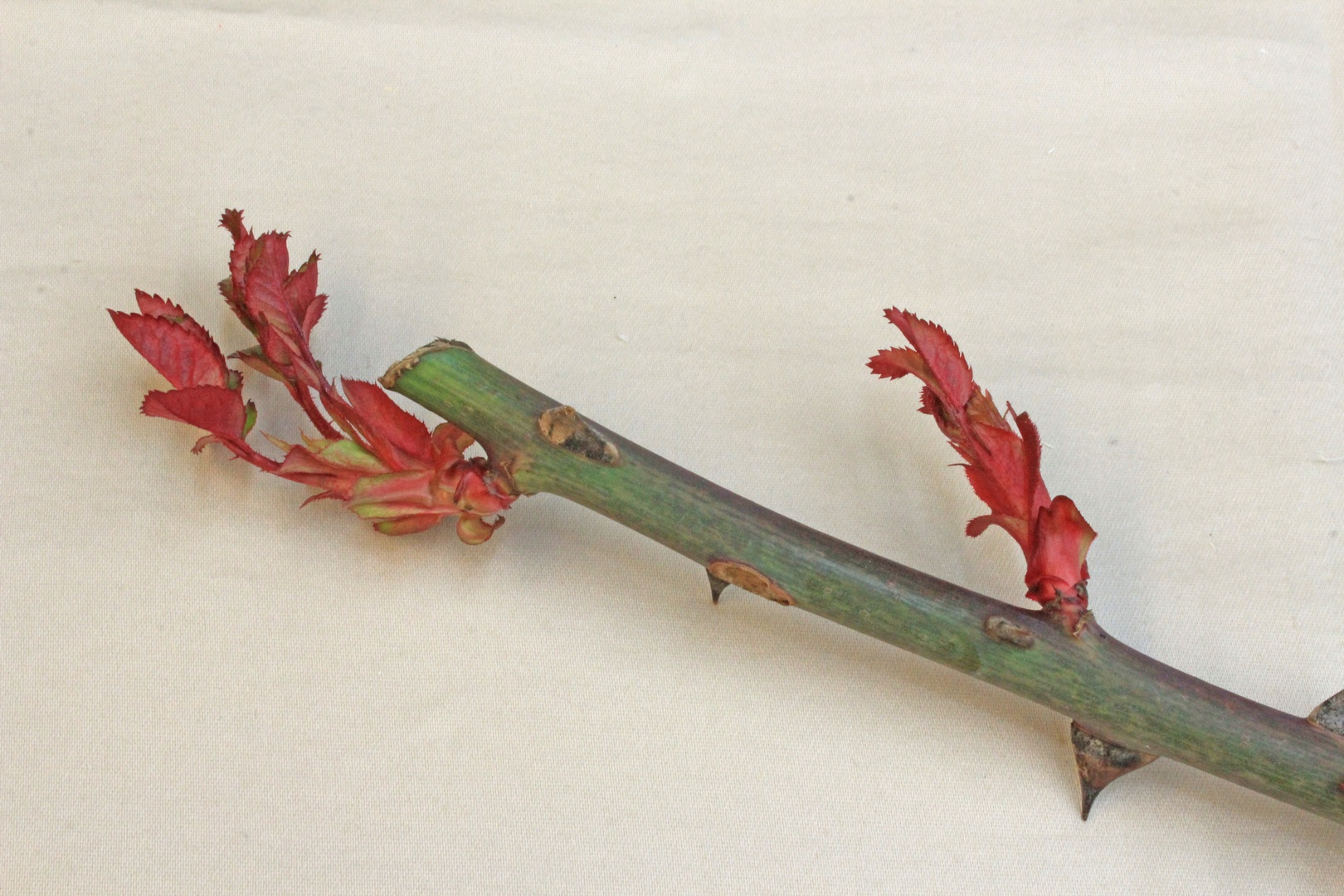Last October 26, I posted a blog here on fall pruning of roses at the Centennial Rose Garden. I noted that the purpose of fall pruning roses is simply to get the bushes cut down, stripped of their leaves and mounded up with beauty bark to protect them from winter damage. I also indicated that the most important time for pruning roses is in early spring – around here that would be when the daffodils and forsythia are in bloom – early to mid-March. That time is rapidly approaching so our plans call for spring pruning the Centennial Garden on Saturday, March 11, beginning at about 9:00am.
In spring we prune roses to remove dead, damaged and weak or spindly canes; to shape the plant’s architecture promoting upward and outward growth, and to maintain what is called “juvenility” of the bush. So how do we do all of this? Let’s take it a step at a time.
First, you must remove the bark mulch from the base of the plant with a small rake – even your fingers if necessary. Using a hose to blast as much of the mulch off as possible will improve the visibility of the lower portion of the bush and make your pruning job easier.
What I do then is to select the three or four best canes on the plant (Figure 1). By “best” I mean they should be young (last year’s wood), thick and healthy-looking and spaced more or less evenly around the plant. If possible I select canes that arise directly from the base, or bud union, avoiding those that are “dog legged” (Figure 2). Once these have been identified I prune out all the other canes.
This leaves me with a bush having only three or four long canes remaining (Figure 3). Then I examine each cane carefully to determine where to make my pruning cuts. The objective is to force the plant’s growth outward, leaving the center of the bush open. The way to do this is to prune just above an outward-facing bud. I normally cut the cane about 3/8” above the bud and at a slight angle to allow water to drain off the cut end.

It’s not always easy to recognize the buds when they are inactive in early spring. Look for tiny reddish bumps on the stem lying just above a leaf scar (Figure 4). The base of a leaf scar always contains a bud – no exceptions. If the cane wood at the point where you make your pruning cut is brown or tan, this means the cane has been damaged by winter (Figure 5). When this happens you must cut down to the next bud – or to the point where the cane is “apple green” indicating that the cane is heathy (Figure 6). Following a severe winter you may have to cut a cane off at its very base to get to clean wood. Don’t be afraid to do this – it will not hurt the bush.
Also, don’t be afraid to prune out canes where buds have already broken and are growing (Figure 7). Often these new shoots will have suffered from late winter cold damage, in which case they have a high probability of becoming blind shoots (shoots that do not produce flowers) or weak, spindly canes that produce small, disappointing blossoms.

So that’s how to spring prune your roses and the time to do it is in March. I hope you’ll find time to come join us at the Centennial Rose Garden on March 11 from 9:00 am to noon when several experts from the Olympia Rose Society will be on hand to demonstrate and answer questions (Figure 8).

Gary Ritchie, Master Rosarian ro********@co*****.net
Centennial Garden Foundation






